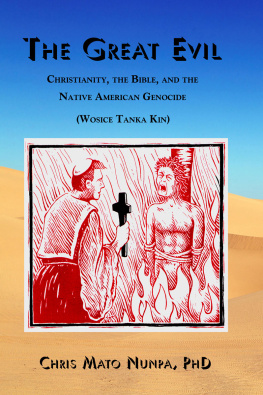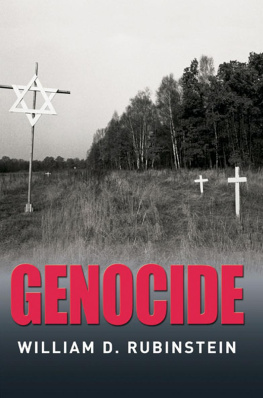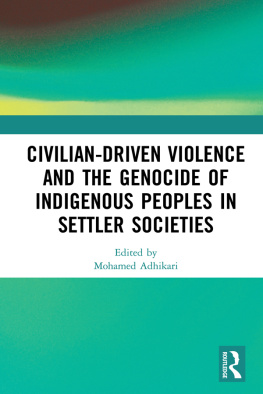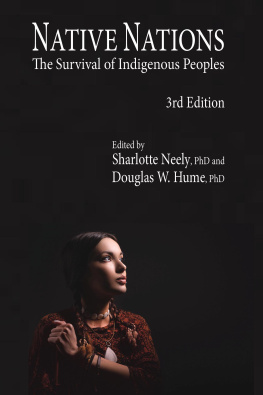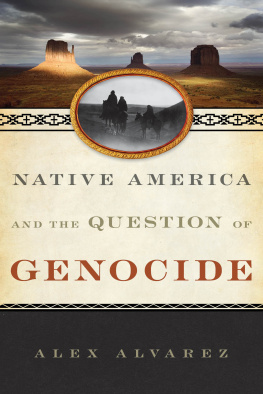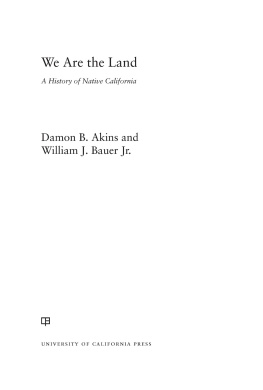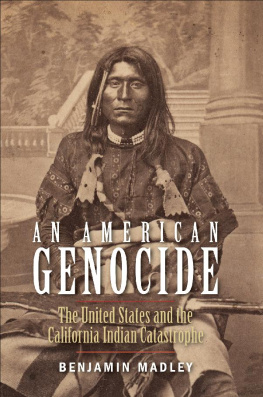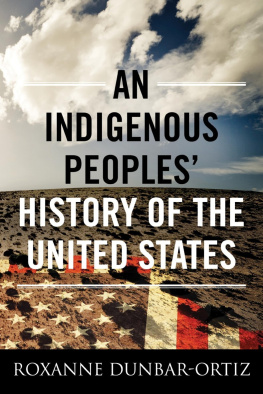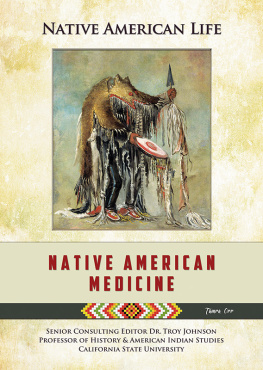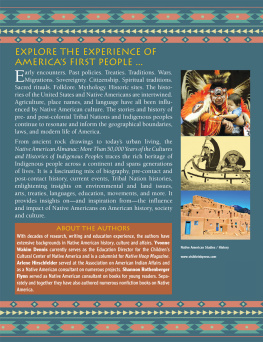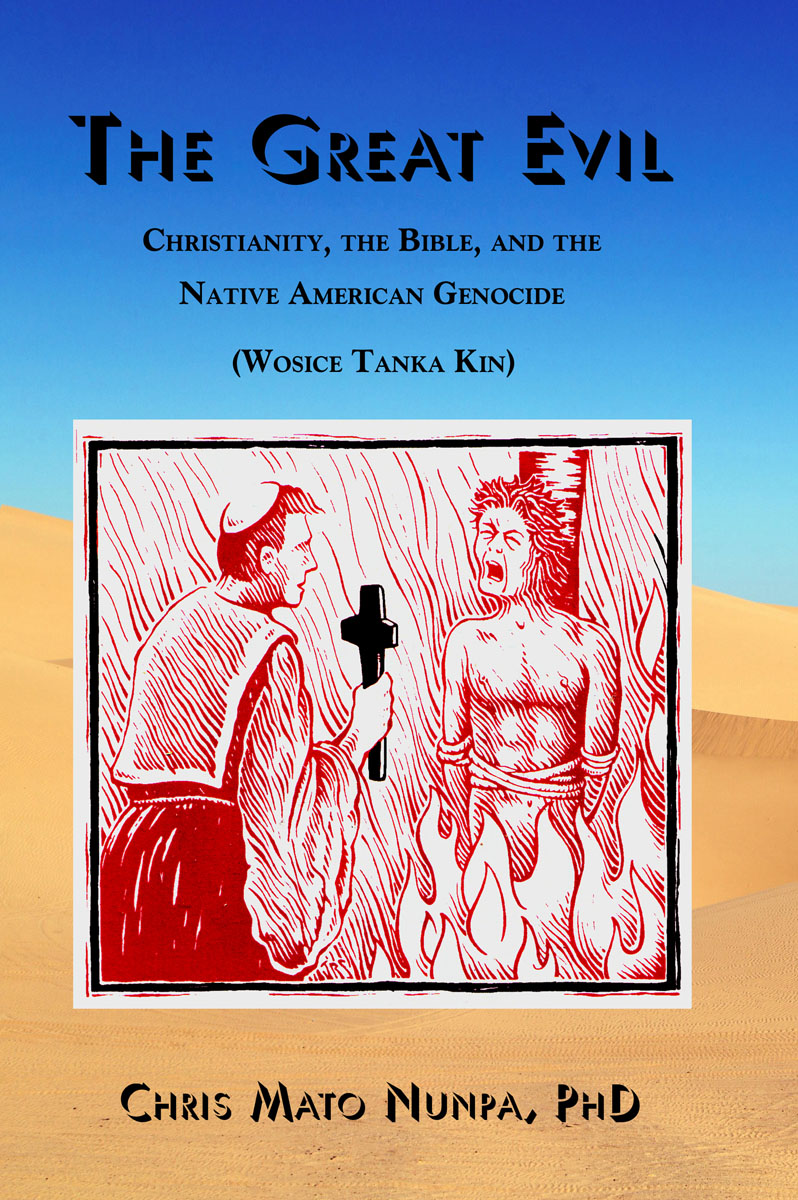
Copyright 2020 by Chris Mato Nunpa. All rights reserved. For information contact:
See Sharp Press
P.O. Box 1731
Tucson, AZ 85702
www.seesharppress.com
Mato Nunpa, Chris.
The Great Evil / Chris Mato Nunpa ; Tucson, Ariz. : See Sharp Press, 2020.
Includes bibliographical references and index.
204 p. ; 23 cm.
ISBN 978-1-947071-36-0 (print)
978-1-947071-41-4 (e-book)
1. Columbus, Christopher--Influence. 2. America--Discovery and exploration--Spanish. 3. Indians, Treatment of. 4. Indians--First contact with Eoropeans. 5. Indians-- Population. 6. Genocide--History. 7. Christianity--Congroversial literature. 8. Indians--Religion and mythology. 9. Indians, Treatment of--North America--History. 10. Indians of North America--Government Relations. 11. Indians of North America--Government Policy. 12. Genocide--North America--History. 13. United States--Race Relations. 14. Indians--Religion and Mythology..
I. Title.
C ONTENTS
To all the survivors of the Indigenous Holocaust of the United States, and to my wife, Mary Beth Faimon, for her support and encouragement
I NTRODUCTION
Train up a child in the way he should go, and when he is old he will not depart from it.
(Proverbs 22:6)
I was born in an Indian hospital in Pipestone, Minnesota on September 3, 1940, and I was raised in a small Dakota community in southwestern Minnesota, Pezihuta Zizi Otunwe, Yellow Medicine Community. Back then, a Dakota baby could not be born in Granite Falls, Minnesota, our border town which was four miles away. It had to be in Pipestone in the Indian Hospital, 75 miles away. A Dakota could not be sick in Granite Falls, s/he had to be sick in Pipestone. This was a legalized form of segregation and of racial discrimination. And, of course, wethe Dakota (the segregated,), and the Wasicu folk of Granite Falls, MN (the segregationists)thought this was OK, that it was normal, like the warmth of the sunshine or the air that we breathe.
Continuing on, the full name of my community is, actually, Pezihuta Zizi Kapi Makoce, Land Where The Yellow Medicine is Dug, the ancient Dakota name for this area. The name applied to my community by the federal government, through the Bureau of Indian Affairs (BIA), is the Upper Sioux Community. Another incidental notethis is something that a colonizing power does: the colonizer (in this case, the U.S. and its Euro-American citizenry) renames places. Hence, we have Upper Sioux Community instead of the ancient Dakota name for the area, Yellow Medicine Community. As Linda Tuhiwai Smith, a noted Maori scholar writes, They (the Colonizer) Came, They Saw, They Named, They Claimed, with emphasis upon They Named!
The examples provided in the preceding paragraph are concrete examples of imperialism and colonialism. When I think of the term penetrate or penetration, I think of the coming of the first western Europeans and the subsequent invasion, land theft, the occupation, and the transformation of the Americas. Of course, this refers to Columbus and the Spanish, initially, then the French, the Dutch, and the English, et. al.
The penetration process of Indigenous lands began in the islands of the Caribbean, then spread to the East Coast of the United States. Then, the process crossed the Appalachian mountains into the lands of the Native Peoples living in the Ohio River Valley; then, the Mississippi River Valleyfrom Minnesota down to Louisiana; then further west into the land of the Aboriginal Peoples of the Great Plains, extending from North and South Dakota down to Oklahoma and Texas; then through the Rocky Mountains and Southwest deserts; and, finally into the West Coast, from the states of Washington and Oregon, down to California. This invasion took about four centuries (the 1500s, the 1600s, the 1700s, and the 1800s); during that time the colonizers, invaders, exploiters, and land-grabbers stole the approximately three billion acres of land within the continental United States. By the end of the 19th century, the massive land theft was complete; the conquest was complete.
As was the genocide project. It was a time of mass killing. The killing fields were the entire expanse of what is now known as the United States of America. About 98.5 percent of the 16 million Indigenous Peoples of the U.S. at the time of contact (1500)
Another aspect of this imperialistic process was the transformation of the land: the cutting down of the trees, the clearing of brush, the building of houses and towns, schools and churches, the plowing up of fields with metal/steel plows, the fencing off of the lands with barbed wire, the damming of rivers, the building of roads over Native trails, etc. Transformation also refers to the transformation of culture: imposition of the conquerors languages (primarily Spanish, French, and English), their religious ideology (viz., Christianity, with its subduing the earth, dominion, cursed earth, and religious imperialism), their economic ideology (viz., capitalism, with its foundation of greed, selfishness, and materialism), and forcing their customs and traditions, their values, and their world view upon the First Nations Peoples. Keep in mind one of Kurt Jonassohns and Frank Chalks four motives for Genocide, specifically, imposing an ideology (e.g., Christianity, etc.) or belief upon the victim group. This imposition of ideologies, beliefs, and values upon a victim group is a component of genocide.
Another component is calling the Native Peoples Indian(s), an inaccurate term which has stuck with us (i.e., the Indigenous Peoples) since 1492. The conquerors, whether they were French, Spanish, Dutch, or English, defined us as savages or pagans, as uncivilized, as sub-human, or as animals.
Then, because we, the Aboriginal Peoples, were so bad, so evil, in their eyes, they felt few or no twinges of conscience about invading and stealing our lands, killing us, exploiting us, removing us, enslaving us, and oppressing us. They used their Bible, their Christian beliefs, and other rationales to justify the killing and other appalling criminal acts perpetrated against the Aboriginal Peoples of the U.S.
Influence of Christianity
There were, approximately, 140 people on the rez when I grew up (the 1940s and the 1950s): men, women, children, babies, and elders. However, in spite of our small numbers, we had three Christian mission churches on our reservationthe Presbyterian, the Episcopal, and the Assemblies of God. They (the white Christians from the three denominations) must have thought we were desperately in need of salvation. White missionaries used to come and be pastors, conduct church services, hymn singing, Sunday School, Bible Studies, etc., to evangelize us. The Assemblies of God conducted Bible-verse-memorization contests, from which I learned many Bible verses. At one point in my school years, the Assemblies of God used to send to our reservation white students from North Central Bible College in Minneapolis (now known as North Central University). They came on weekends and held a church service on Saturday night and Sunday school classes and a church service on Sunday morning. The college students would either sleep in the church or in homes of the Dakota people. Then, the Dakota who attended the church services and Sunday schools (e.g., my mother, family members, and relatives) would bring food and we would all eat the Sunday noon meal together. I really enjoyed those times the good music, the good food, and the good fellowship (not so much the preaching and the saving).
When I was growing up in Yellow Medicine, I used to go to Sunday School and Vacation Bible School in the summer at all three churches at different times during my youth. Since we were a thoroughly Christianized Dakota community, the churches were our social centers. Our traditional ceremonies and traditions, by the time I was growing up, had been not only suppressed but also supplanted. Thus, we engaged in Christian activities such as Sunday services, baptisms, funerals, and the white mans holidays. Some of my most pleasant memories of my childhood were centered around the churches.
Next page
